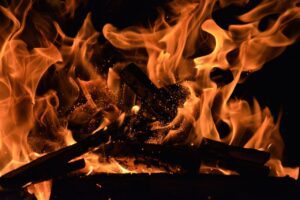
Firewood Perth: Why Firewood Is Still in Demand During Perth’s Summer
When most people think of firewood in Perth, they picture cold winter nights and indoor heating. However, firewood remains incredibly popular throughout Perth’s summer for

There’s something primal and captivating about a crackling fire. Whether you’re planning a cozy evening indoors or a rustic outdoor gathering, mastering the art of firelighting is essential. One of the most effective tools in your fire-starting arsenal is the humble firelighter. In this guide, we’ll take you through everything you need to know about using firelighters to effortlessly ignite a roaring blaze.
Understanding Firelighters
Firelighters are small, easily combustible products designed to help you start fires quickly and efficiently. They come in various forms, such as blocks, cubes, sticks, and even liquid or gel. These products are often made from a combination of paraffin wax, sawdust, paper, and other flammable materials.
Choosing the Right Firelighter
Before delving into the techniques, it’s important to select the right type of firelighter for your needs:
Safety First
Before you begin, ensure your safety by following these precautions:
Step-by-Step Guide to Using Firelighters
Tips for Success
Conclusion
Mastering the art of firelighters elevates your fire-starting skills and enhances the enjoyment of gathering around a warm and inviting fire. By selecting the right type of firelighter, following safety precautions, and following a step-by-step approach, you can confidently start fires for any occasion – whether it’s a cozy night indoors or an exciting outdoor adventure. Remember, practice makes perfect, so don’t hesitate to refine your technique and enjoy the magic of a well-lit fire.
ary Tools: Before diving into the cleaning process, gather the following tools to make the job easier and more efficient:
Regularly cleaning your fireplace not only enhances its visual appeal but also ensures its safe and efficient operation. By following the steps outlined in this guide, you can maintain a clean fireplace and minimize the risk of potential hazards associated with neglect. Remember, when in doubt or for more complex cleaning tasks, it’s always advisable to seek professional assistance to ensure the longevity and safety of your fireplace. Stay warm, cozy, and safe!

When most people think of firewood in Perth, they picture cold winter nights and indoor heating. However, firewood remains incredibly popular throughout Perth’s summer for

Any room may be made into a comfortable shelter with the immortal warmth and ambiance of a blazing fire in the fireplace. Notwithstanding, the firewood’s

A classic wellspring of comfort is a blazing fire in the fireplace, particularly on winter evenings. In any case, inaccurate information regarding firewood could result

The charm of a snapping fireplace is an immortal enjoyment that adds comfort and warmth to houses around. In any case, choosing the fitting firewood